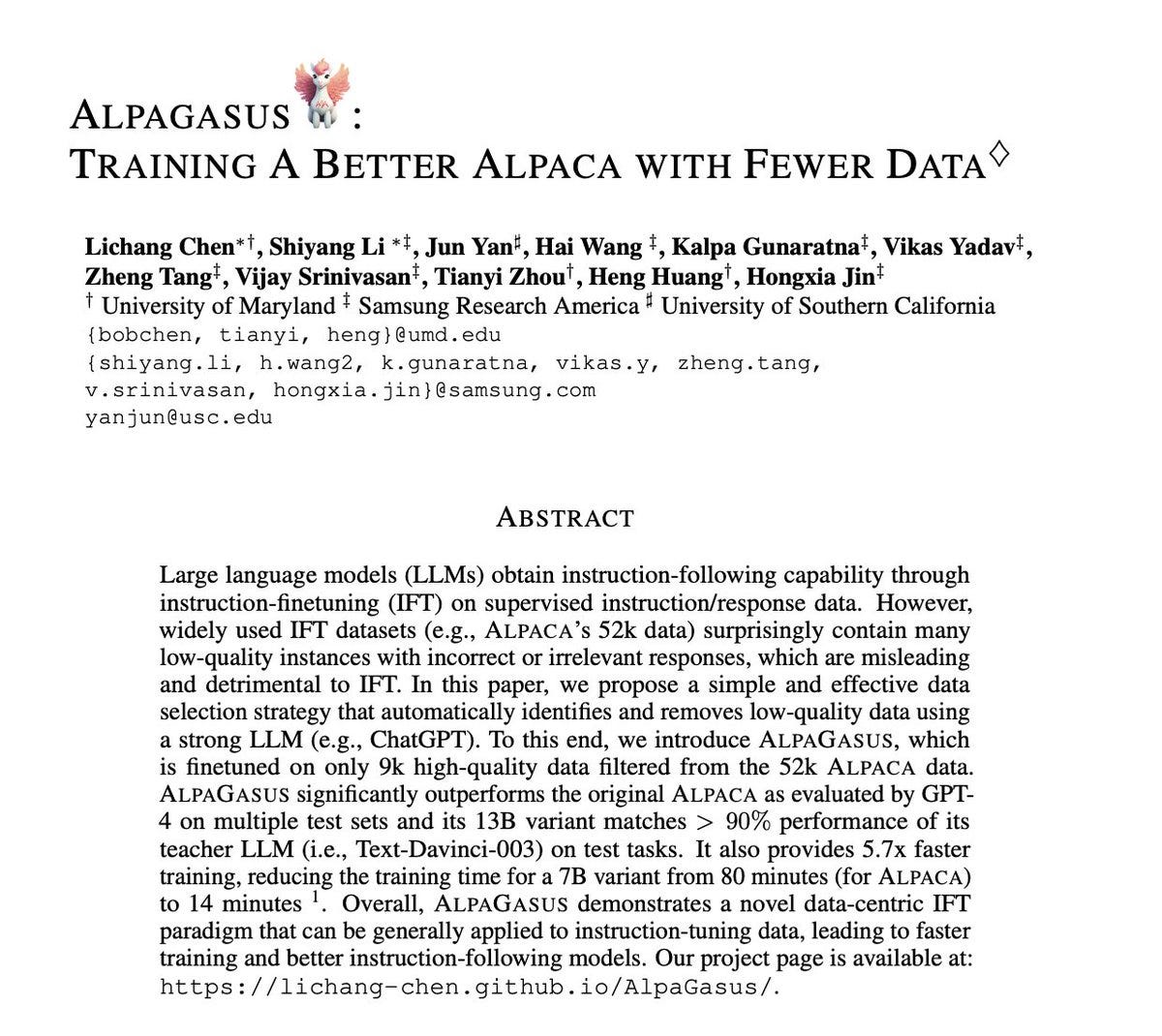AI news stories
Fable unveils Showrunner AI to create South Park-like TV shows with you as the star
Microsoft closes at record after revealing pricing for new A.I. subscription
Llama 2 is out, and it's well-integrated with the HF ecosystem!
AI papers
Retentive Network: A Successor to Transformer for Large Language Models paper page: https://huggingface.co/papers/2307.08621
propose Retentive Network (RetNet) as a foundation architecture for large language models, simultaneously achieving training parallelism, low-cost inference, and good performance. We theoretically derive the connection between recurrence and attention. Then we propose the retention mechanism for sequence modeling, which supports three computation paradigms, i.e., parallel, recurrent, and chunkwise recurrent. Specifically, the parallel representation allows for training parallelism. The recurrent representation enables low-cost O(1) inference, which improves decoding throughput, latency, and GPU memory without sacrificing performance. The chunkwise recurrent representation facilitates efficient long-sequence modeling with linear complexity, where each chunk is encoded parallelly while recurrently summarizing the chunks. Experimental results on language modeling show that RetNet achieves favorable scaling results, parallel training, low-cost deployment, and efficient inference. The intriguing properties make RetNet a strong successor to Transformer for large language models.
INVE: Interactive Neural Video Editing
paper page: https://huggingface.co/papers/2307.07663
present Interactive Neural Video Editing (INVE), a real-time video editing solution, which can assist the video editing process by consistently propagating sparse frame edits to the entire video clip. Our method is inspired by the recent work on Layered Neural Atlas (LNA). LNA, however, suffers from two major drawbacks: (1) the method is too slow for interactive editing, and (2) it offers insufficient support for some editing use cases, including direct frame editing and rigid texture tracking. To address these challenges we leverage and adopt highly efficient network architectures, powered by hash-grids encoding, to substantially improve processing speed. In addition, we learn bi-directional functions between image-atlas and introduce vectorized editing, which collectively enables a much greater variety of edits in both the atlas and the frames directly. Compared to LNA, our INVE reduces the learning and inference time by a factor of 5, and supports various video editing operations that LNA cannot. We showcase the superiority of INVE over LNA in interactive video editing through a comprehensive quantitative and qualitative analysis, highlighting its numerous advantages and improved performance.
CoTracker: It is Better to Track Together
paper page: https://huggingface.co/papers/2307.07635
Methods for video motion prediction either estimate jointly the instantaneous motion of all points in a given video frame using optical flow or independently track the motion of individual points throughout the video. The latter is true even for powerful deep-learning methods that can track points through occlusions. Tracking points individually ignores the strong correlation that can exist between the points, for instance, because they belong to the same physical object, potentially harming performance. In this paper, we thus propose CoTracker, an architecture that jointly tracks multiple points throughout an entire video. This architecture combines several ideas from the optical flow and tracking literature in a new, flexible and powerful design. It is based on a transformer network that models the correlation of different points in time via specialised attention layers. The transformer iteratively updates an estimate of several trajectories. It can be applied in a sliding-window manner to very long videos, for which we engineer an unrolled training loop. It can track from one to several points jointly and supports adding new points to track at any time. The result is a flexible and powerful tracking algorithm that outperforms state-of-the-art methods in almost all benchmarks.
Diffusion Models Beat GANs on Image Classification
paper page: https://huggingface.co/papers/2307.08702
While many unsupervised learning models focus on one family of tasks, either generative or discriminative, we explore the possibility of a unified representation learner: a model which uses a single pre-training stage to address both families of tasks simultaneously. We identify diffusion models as a prime candidate. Diffusion models have risen to prominence as a state-of-the-art method for image generation, denoising, inpainting, super-resolution, manipulation, etc. Such models involve training a U-Net to iteratively predict and remove noise, and the resulting model can synthesize high fidelity, diverse, novel images. The U-Net architecture, as a convolution-based architecture, generates a diverse set of feature representations in the form of intermediate feature maps. We present our findings that these embeddings are useful beyond the noise prediction task, as they contain discriminative information and can also be leveraged for classification. We explore optimal methods for extracting and using these embeddings for classification tasks, demonstrating promising results on the ImageNet classification task. We find that with careful feature selection and pooling, diffusion models outperform comparable generative-discriminative methods such as BigBiGAN for classification tasks. We investigate diffusion models in the transfer learning regime, examining their performance on several fine-grained visual classification datasets. We compare these embeddings to those generated by competing architectures and pre-trainings for classification tasks.
AlpaGasus: Training A Better Alpaca with Fewer Data
paper page: https://huggingface.co/papers/2307.08701
Large language models~(LLMs) obtain instruction-following capability through instruction-finetuning (IFT) on supervised instruction/response data. However, widely used IFT datasets (e.g., Alpaca's 52k data) surprisingly contain many low-quality instances with incorrect or irrelevant responses, which are misleading and detrimental to IFT. In this paper, we propose a simple and effective data selection strategy that automatically identifies and removes low-quality data using a strong LLM (e.g., ChatGPT). To this end, we introduce AlpaGasus, which is finetuned on only 9k high-quality data filtered from the 52k Alpaca data. AlpaGasus significantly outperforms the original Alpaca as evaluated by GPT-4 on multiple test sets and its 13B variant matches >90% performance of its teacher LLM (i.e., Text-Davinci-003) on test tasks. It also provides 5.7x faster training, reducing the training time for a 7B variant from 80 minutes (for Alpaca) to 14 minutes We apply IFT for the same number of epochs as Alpaca(7B) but on fewer data, using 4timesNVIDIA A100 (80GB) GPUs and following the original Alpaca setting and hyperparameters.. Overall, AlpaGasus demonstrates a novel data-centric IFT paradigm that can be generally applied to instruction-tuning data, leading to faster training and better instruction-following models.








